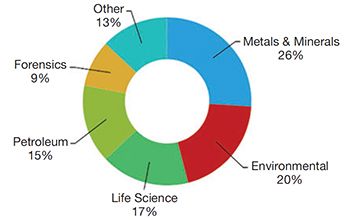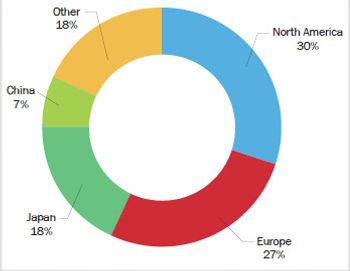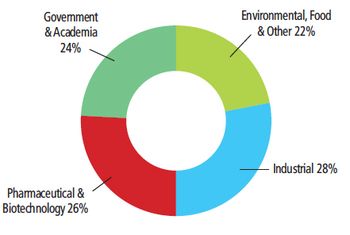
- Spectroscopy-07-01-2013
- Volume 28
- Issue 7
Market Profile: Infrared Microscopy and Imaging
Infrared (IR) microscopy includes both conventional microscope systems and more advanced imaging systems, which are used in two ways.
Infrared (IR) microscopy includes both conventional microscope systems and more advanced imaging systems, which are used in two ways. The more traditional IR microscopy method is "point and shoot," where the microscope is used to locate a defect or point of interest on a sample, which is then analyzed using the IR spectrometer. Such systems are useful across a broad range of industries, such as semiconductors and electronics, pharmaceuticals, forensics, biology, and materials. IR imaging systems have all the capabilities of traditional IR microscopes, but also provide high-resolution mapping of samples by collecting IR spectral information for each pixel, which can be as small as 10 µm, or even smaller with some of the latest instruments.
Infrared microscopy demand by industry for 2012.
The market for IR spectroscopy was more than $150 million in 2012, accounting for close to a quarter of the overall infrared spectroscopy market. This includes stand-alone integrated IR microscopes and imaging systems, add-on IR microscopy systems that are sold separately from benchtop spectrometers, and initial system sales that include both spectrometer and microscope systems as a packaged solution. Although growth in demand is likely to be flat in 2013 due in large part to government funding cuts, it should rebound by late 2014, and will continue to be a driving factor of the growth of the overall infrared spectroscopy market.
The foregoing data were extracted from SDi's market analysis and perspectives report entitled The Global Assessment Report, 12th Edition: The Laboratory Life Science and Analytical Instrument Industry, October 2012. For more information, visit
Articles in this issue
over 12 years ago
X-ray Fluorescence Spectroscopy, Part I: The Educational Essentialsover 12 years ago
Product Resourcesover 12 years ago
Hydrogen–Deuterium Exchange Mass Spectrometryover 12 years ago
Vol 28 No 7 Spectroscopy July 2013 Regular Issue PDFNewsletter
Get essential updates on the latest spectroscopy technologies, regulatory standards, and best practices—subscribe today to Spectroscopy.




